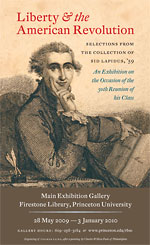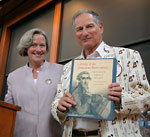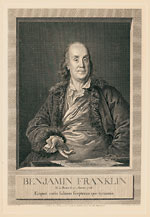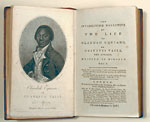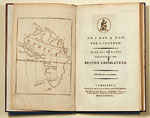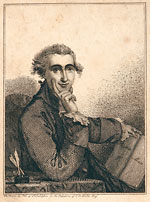Tiger Tale
Now at Princeton: The Lapidus Collection of 18th-Century Americana
By Nicholas A. Basbanes
 Nicholas A. Basbanes recently received a National Endowment for the Humanities fellowship to work on his book on paper, which is forthcoming from Knopf. His most recent book is Editions & Impressions, a collection of essays. His other works include the acclaimed A Gentle Madness, Every Book Its Reader, Patience & Fortitude, Among the Gently Mad, and A Splendor of Letters.
Nicholas A. Basbanes recently received a National Endowment for the Humanities fellowship to work on his book on paper, which is forthcoming from Knopf. His most recent book is Editions & Impressions, a collection of essays. His other works include the acclaimed A Gentle Madness, Every Book Its Reader, Patience & Fortitude, Among the Gently Mad, and A Splendor of Letters.
There are as many reasons why people collect books as there are people who collect them. So when I first began collecting collectors back in the 1980s, I decided that the ones who interested me most were those whose efforts went well beyond self-fulfillment.
No surprise, then, that one of my running mantras all these years has been that so much of what we hold dear of our history, our literature, and our culture would be lost forever without the perseverance of the collector. It is true, as the incomparable bookseller, Dr. A. S. W. Rosenbach, reminded us close to a century ago, that the driving motive has generally been an unquenchable thirst for the hunt. “I have known men to hazard their fortunes, go long journeys halfway about the world, forget friendships, even lie, cheat, and steal, all for the gain of a book,” he wrote in Books and Bidders, but it is also true that so many of the world’s great libraries are measurably richer today because of this sort of zeal—and it has been this particular dynamic that I have always found worth exploring.
A case in point is a superb collection of 18th-century pamphlets on display now through Jan. 3 at Princeton University, and the subject of an uncommonly interesting catalog, both titled Liberty & The American Revolution: Selections from the Collection of Sid Lapidus. Beyond the fact that each of the 157 items on display in the Firestone Library exhibition come from a single collection is the additional circumstance that each has been drawn from a much larger gathering of 2,500 items, all of which, at some point in the future, will also be given to the university, and made available to interested scholars.
What prompted Lapidus to present this particular selection now—and it represents “the cream of the crop,” according to Stephen Ferguson, curator of rare books at Princeton—was the 50th anniversary of his graduation from the college in 1959, observed this past May in a series of gala events, and acknowledged by him with this installment of what in time will be yet another major benefaction to his alma mater. Trained as an attorney, Lapidus is a retired partner of Warburg Pincus, an equity investment firm based in New York. His other gifts to Princeton include creation of the Sidney and Ruth Lapidus Professorship in the American Revolutionary Era, held by Sean Wilentz, who wrote the introduction to the exhibition catalog, and establishment of the Lapidus Family Fund for American Jewish Studies. He has also provided substantial support to the American Antiquarian Society in Worcester, Mass., where he currently serves as chairman of the board of trustees, and the New-York Historical Society.
“Reunions at Princeton are taken very seriously, especially the 50th,” Ferguson told me. “So Sid felt the time was right to do something really special.” Far more than just a gathering of high-spots—though there certainly are a number of extraordinarily scarce items on display—the items Ferguson and Lapidus chose to include follow a very precise arc that illuminates the dual notions of rights and liberty as they emerged in America, beginning in the late 17th century when the first stirrings were expressed, up to the dawn of the 19th, with the passing of the Revolutionary period. But the heart of the collection, clearly, focuses predominantly on the intellectual origins of the seismic events that unfolded in the mid-1700s.









